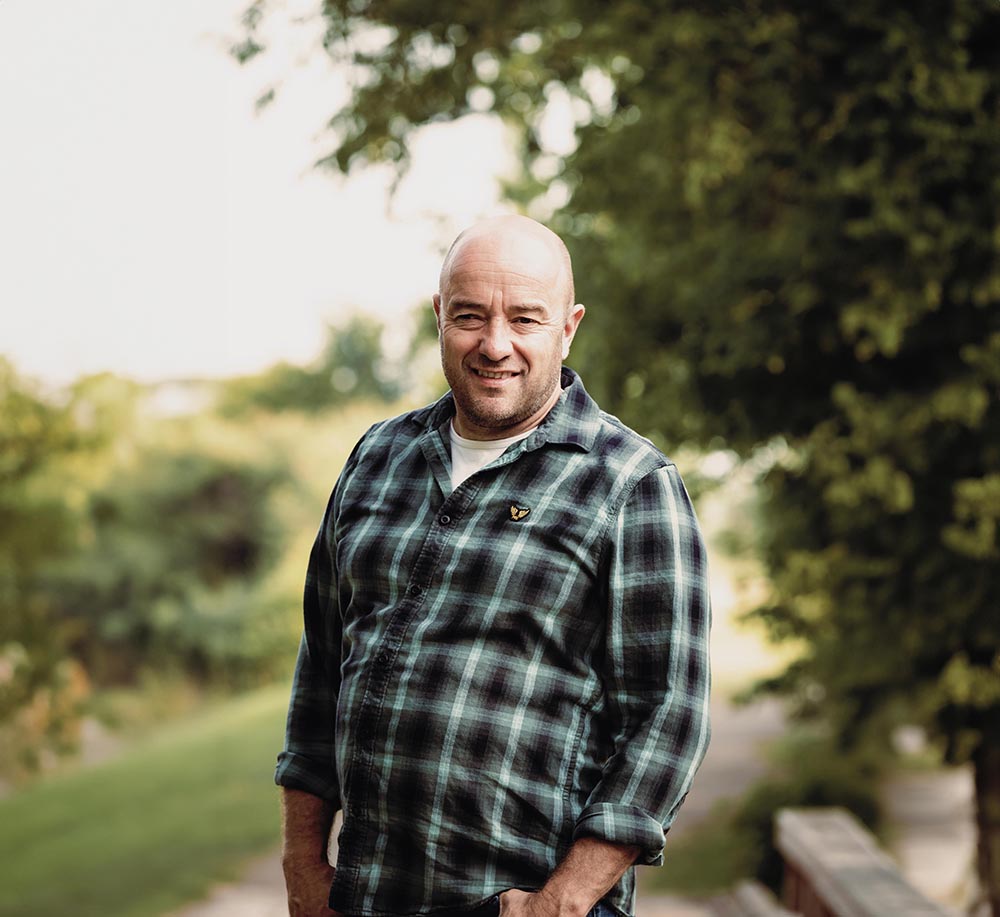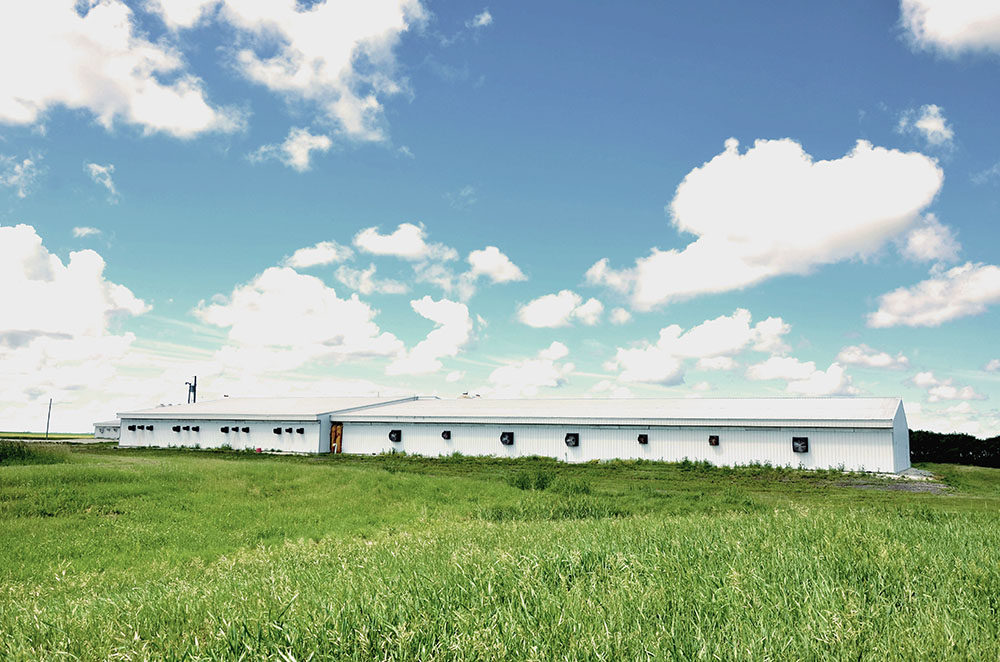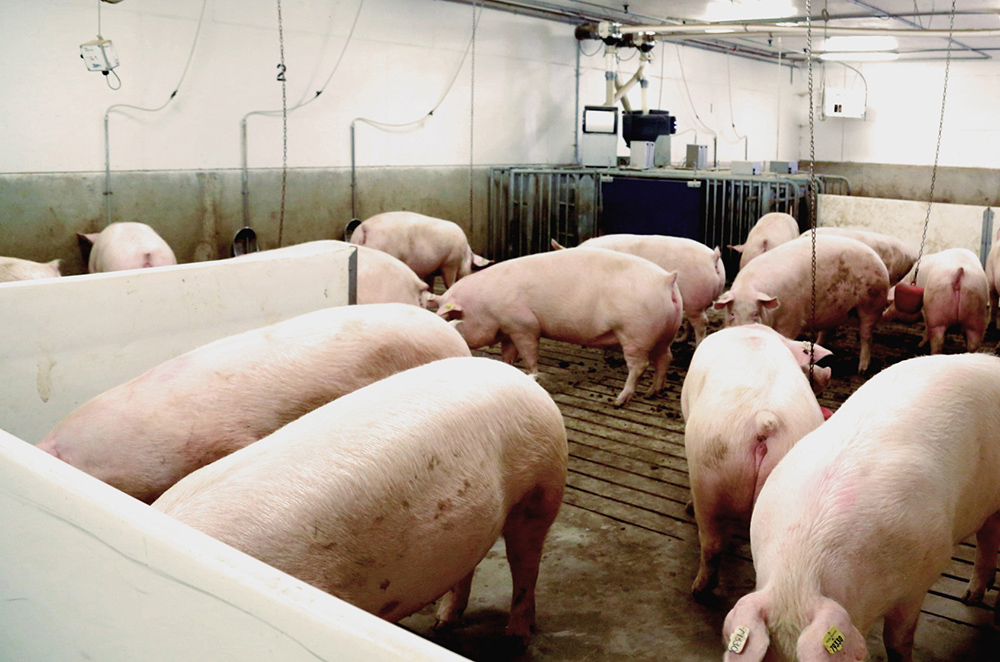Jeroen Van Boekel combines safety and sustainability to keep pigs healthy
There’s no getting around it—pigs hold a certain stigma in our society. The English language has countless sayings painting them in a negative light. “What a pig sty” for a messy room. “Sweating like a pig” when we overheat. “As greedy as a pig” if we want too much.
Jeroen Van Boekel, a farmer with Rhineland Pork, Stanley Pork and Morris Piglets in Manitoba, knows better. Working closely with pigs all his life has shown Jeroen that our portly friends have much more to offer than meets the eye. Discover how he prioritizes their safety and his farm’s sustainability while breaking down these preconceived ideas.
Pig problems

At the age of 28, Jeroen moved to Manitoba from the Netherlands to start his pig farming dream from scratch. He’d always loved working on a farm, and pigs offered a unique opportunity to break into the Canadian agricultural market: “I’m a businessman as much as I am a farmer, and the return on investment was easy to see with hogs at that time,” Jeroen says.
Regardless of the success Jeroen has found in over twenty years of running a business, pig farming still faces a lot of hurdles.
For instance, pig farming isn’t a visual industry, as most of the production happens behind closed doors for the safety of both the animals and people. Pigs are susceptible to diseases, parasites, and viruses, which can spread easily and have devastating results. Farmers have to be careful just travelling between barns, with strict biosecurity measures in place.
It's a constant battle, but Jeroen does everything in his power to ensure the well-being of the pigs on his farm and the community he serves.
The pig-er picture
It’s no surprise that Jeroen sees pigs differently than most people, as he understands that they need special care to thrive. “I personally believe they’re a lot cleaner than many other farm animals,” says Jeroen. “But, unlike other farm animals, you have to be careful with pigs.”
Careful how? For starters, biosecurity is crucial on a pig farm. Jeroen himself has a process to ensure diseases are at a minimum when someone enters the barn: removing all clothing, showering rigorously, then putting on fresh, farm-only clothes that don’t leave the barn. Even his lunch box is disinfected before it passes through the door.
There’s also the surrounding community and farmland to consider. Pig farms require significant space due to manure storage and application to the land and Jeroen must be considerate when applying the organic fertilizer produced by his pigs. For example, he injects the manure directly into the soil to protect waterways and to ensure that valuable nutrients are placed back into the soil near the roots of the plants where the crops can use them to grow.
These practices are also great for reducing greenhouse gases has the manure has minimal air exposure. As an added layer of protection, Jeroen has wells set up around the manure storage, regularly testing the water to ensure the stored manure doesn’t leak into the ground water.
He also cares for the land by using environmentally friendly ways to feed the pigs. As an early adopter of group sow housing with electronic feeders, Jeroen is careful to feed the pigs exactly what they need to stay healthy. Based on size and age, animals receive the exact amount of food required per serving, creating a balanced diet and reducing feed waste.
It’s these practises that make the world of difference when working with pigs. As a farmer who looks to ensure a greener future, Jeroen is pig-headedly committed to making the animals, the community, and the land a constant priority.




What is group sow housing?
Group sow housing is a housing system for gestating (pregnant) female pigs. It allows them more freedom to walk, eat and socialize, which can also lead to better reproductive performances. Electronic feeders (one variation of feeding in group sow housing) uses a computer to read a tag on each pig’s ear, indicating the exact amount of feed each animal should receive.







